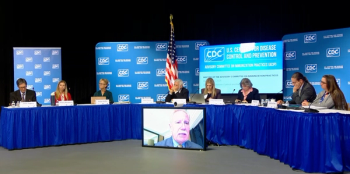
Is it time to open a walk-in clinic?
Retail health clinics are popping up everywhere. Nowadays, they reside in pharmacies, chain drug stores such as Walgreens and CVS, in supermarkets and big-box stores, such as Walmart and Target.
Retail health clinics are popping up everywhere. Nowadays, they reside in pharmacies, chain drug stores such as Walgreens and CVS, in supermarkets and big-box stores, such as Walmart and Target.
Further reading:
According to
To see how primary care providers themselves view the trend, in 2015, Accenture surveyed 1,000 physicians in the U.S., and asked their opinion about their patients using such clinics. Forty-one percent of the respondents said that they were comfortable with their patients using a retail clinic for certain preventive services, such as vaccinations. However, 17% said that they were not comfortable with their patients using retail centers for primary care.
Keeping patients close
Mark Puffenberger, MD, who practices family medicine, and his partners at the Intermountain Medical Group observed walk-in clinics sprouting in their area in Shavertown, Pennsylvania. The local Walmart, Sam’s Club and a CVS all had clinics that were starting to serve some of their patients. In addition, the Geisinger Health System, which is a competitor to the hospital system that owns the Intermountain practices, opened its own urgent care center. Some Intermountain patients were seeking care there, too.
Related:
Puffenberger recalls spending hours making rounds at the hospital, during which he would often take phone calls from patients with everyday issues, like colds or the flu. Those patients calling in wanted to be seen quickly, but there simply wasn’t enough time to continue making rounds and satisfy the acutely ill patients.
“It was bad medicine, and (we) lost revenue,” he says.
Watching competitors attracting their patients, and feeling that they weren’t fully serving them led Puffenberger and his colleagues to open their own walk-in clinic at their Shavertown location, about 18 months ago. Puffenberger’s group is the first of the 22 primary care sites that are part of Intermountain to open a walk-in clinic.
The Shavertown group employs six physicians, one nurse practitioner and one physician’s assistant. Several additional Intermountain locations will soon also open walk-in clinics, he says.
A clear sense that patients become frustrated when they have limited access to services they need quickly also motivated the staff at Family Medicine Associates in Lawrence, Kansas to open its walk-in clinic about 10 years ago, says practice administrator Kathy Severa. The clinic helped the practice solve two vexing problems for their patients: (1) being unable to see a clinician when they were sick, and (2) not wanting to wait for long periods when they did come to the office.
Popular on our site:
Before opening its walk-in clinic, Family Medicine Associates would simply squeeze ill patients who needed prompt attention into an already-full schedule. This approach meant that people with long-scheduled appointments had to wait longer to be seen, and that staff members were losing their lunch hours.
Making the needed changes
To free up physicians’ time to work at the walk-in clinic, Puffenberger and his partners gradually backed away from making hospital rounds, letting hospitalists take over. He was the first physician in his group to drop hospital visits. In the first year he did so, he says he lost about $10,000, but soon made up for it with income from the walk-in clinic and with some work for nearby nursing homes.
In addition to maintaining the same income, he says, “my lifestyle got so much better.” His colleagues noticed this, and they, too, started dropping in-patient visits. Now he says, it’s pretty clear that nobody wants to go back to the hospital.
Clearly, each practice has to set clinic hours that suit its particular staff. The Intermountain Shaverton clinic is open seven days a week. Hours are Monday to Friday, 4 PM to 9 PM, Saturdays 9 AM to 3 PM, and Sundays, 10 AM to 3 PM. Staffing varies. Usually on weekdays, it is staffed by a physician’s assistant but sometimes a physician covers it. . Also, doctors who have no-show patients may choose to work at the clinic during those time slots.
In contrast, the Family Medicine Associates walk-in clinic operates six days a week. On Mondays through Thursdays, its hours are 7:30 AM to 5:30 PM, and on Fridays , 7:30 AM to 5 PM; it’s open Saturdays from 8 AM to noon and is closed Sundays. Staffing varies from day to day. Sometimes a physician covers the clinic. At other times, a physician’s assistant does so. If one of the practice’s doctors has a no-show for a certain time slot, he or she will often go work at the clinic.
Hot topic:
For Family Medicine Associates, scheduling represents the most challenging aspect of running the clinic. “There are times we have providers there with nothing to do, and at other times patients have to wait longer than we would like,” Severa says.
Multiple advantages for patients
Beyond convenient hours, walk-in clinics offer patients other advantages. For instance, all the InterMountain offices share the same computer system. That means if a patient from another Intermountain location comes to the Shavertown clinic, the clinician seeing him or her has full access to their records and, after the visit, their own primary care doctor can immediately see all the clinical notes as well. Copays at the walk-in clinic are the same as for any other primary care visit, and are lower than at an urgent care clinic or an emergency department. Initially, the hospital that owns Intermountain funded the clinic.
The comfort of a familiar pace can be another advantage, especially for children, says Severa. At Family Medicine Associates, clinic patients walk through the same front door and check in at the same window as scheduled patients. “It’s scary for little kids to go for treatment to a different place,” she says.
As did Puffenberger, Severa also cites continuity of care as a clinical advantage. With patients’ records immediately at hand, the walk-in clinician knows about any allergies the patient has, and their medical history.
The financial side
The Intermountain group is hospital-owned, and the hospital initially funded the walk-in clinic, in part to get primary care patients out of their emergency room. It took about a year for the clinic to start making money, at which point the hospital turned it over to the physicians in Dr. Puffenberger’s group to manage. This meant that he and his partners took no risk initially.
Popular on our site:
Family Medicine Associates is a private, independent practice so the physicians there did take a financial risk by opening the walk-in clinic. Their costs are limited to the salaries of the care providers staffing the clinic, and it took about six months for the clinic to start running in the black.
The FMA partners don’rt see the clinic cannibalizing patients that would otherwise be seen in the usual manner. Instead they view it, Severa says, as an extension of their practice. “Patients seen through the walk in option are still being treated by Family Medicine Associates, just in a manner that works better for them on that day.”
Severa adds that beyond the positive cash flow a major benefit of the clinic has been a steep decline in the office’s overall stress level. “The physicians no longer had to scramble to fit in people who needed to be seen,” she says. “That was a wonderful benefit.”
Newsletter
Stay informed and empowered with Medical Economics enewsletter, delivering expert insights, financial strategies, practice management tips and technology trends — tailored for today’s physicians.
















